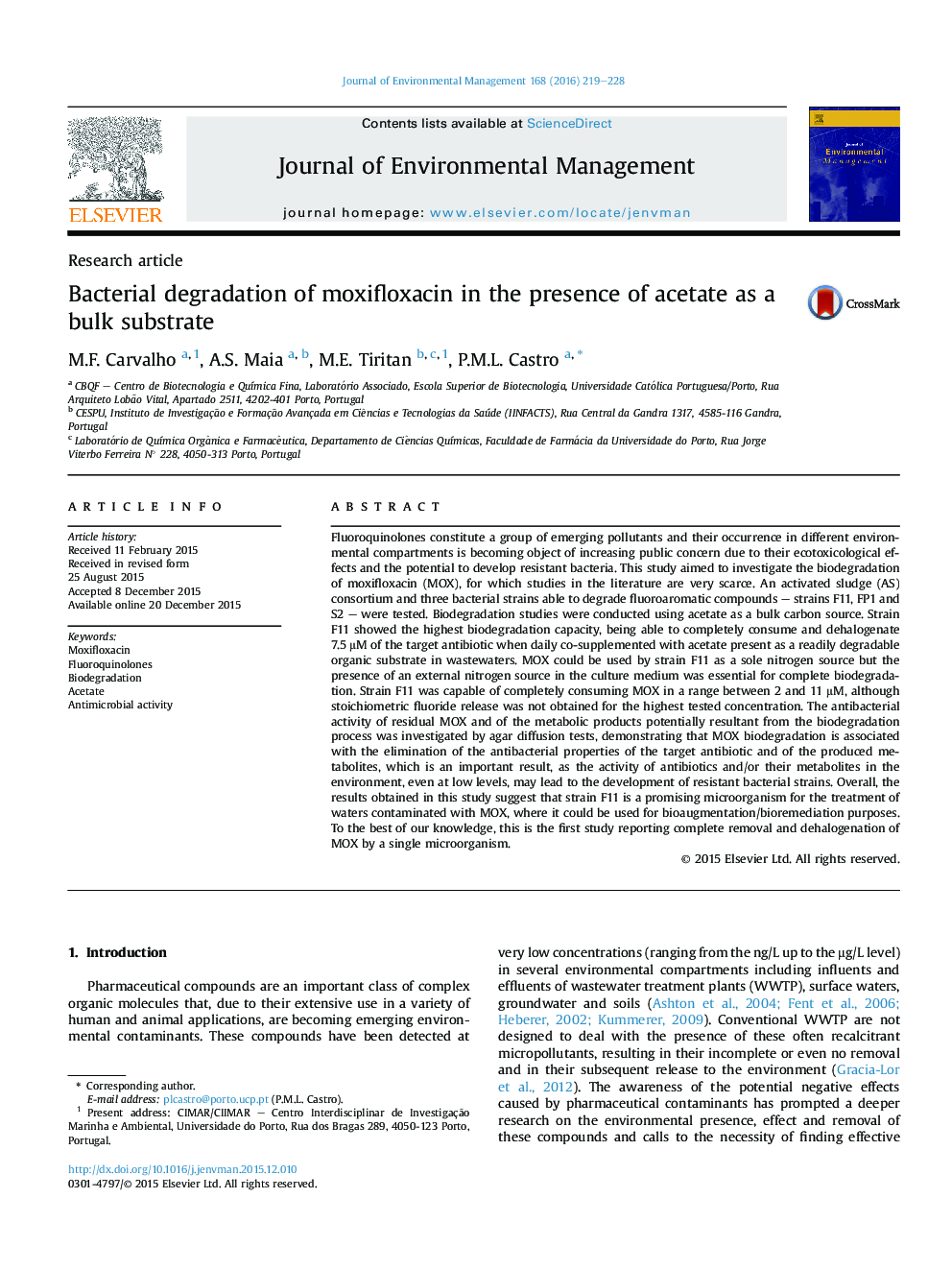| Article ID | Journal | Published Year | Pages | File Type |
|---|---|---|---|---|
| 1055561 | Journal of Environmental Management | 2016 | 10 Pages |
•Complete biodegradation of MOX by a bacterium is reported for the first time.•Activated sludge showed a week capacity to degrade MOX.•Co-supplementation with acetate stimulated MOX biodegradation.•The biodegradation of MOX followed a first order kinetics.•Biodegradation removed the antibacterial activity of MOX and of its metabolites.
Fluoroquinolones constitute a group of emerging pollutants and their occurrence in different environmental compartments is becoming object of increasing public concern due to their ecotoxicological effects and the potential to develop resistant bacteria. This study aimed to investigate the biodegradation of moxifloxacin (MOX), for which studies in the literature are very scarce. An activated sludge (AS) consortium and three bacterial strains able to degrade fluoroaromatic compounds – strains F11, FP1 and S2 – were tested. Biodegradation studies were conducted using acetate as a bulk carbon source. Strain F11 showed the highest biodegradation capacity, being able to completely consume and dehalogenate 7.5 μM of the target antibiotic when daily co-supplemented with acetate present as a readily degradable organic substrate in wastewaters. MOX could be used by strain F11 as a sole nitrogen source but the presence of an external nitrogen source in the culture medium was essential for complete biodegradation. Strain F11 was capable of completely consuming MOX in a range between 2 and 11 μM, although stoichiometric fluoride release was not obtained for the highest tested concentration. The antibacterial activity of residual MOX and of the metabolic products potentially resultant from the biodegradation process was investigated by agar diffusion tests, demonstrating that MOX biodegradation is associated with the elimination of the antibacterial properties of the target antibiotic and of the produced metabolites, which is an important result, as the activity of antibiotics and/or their metabolites in the environment, even at low levels, may lead to the development of resistant bacterial strains. Overall, the results obtained in this study suggest that strain F11 is a promising microorganism for the treatment of waters contaminated with MOX, where it could be used for bioaugmentation/bioremediation purposes. To the best of our knowledge, this is the first study reporting complete removal and dehalogenation of MOX by a single microorganism.
